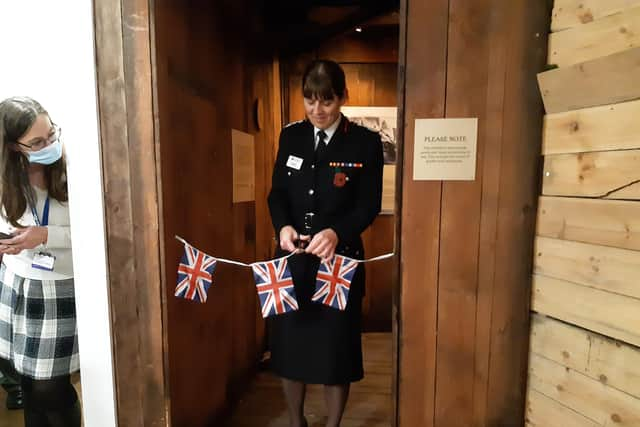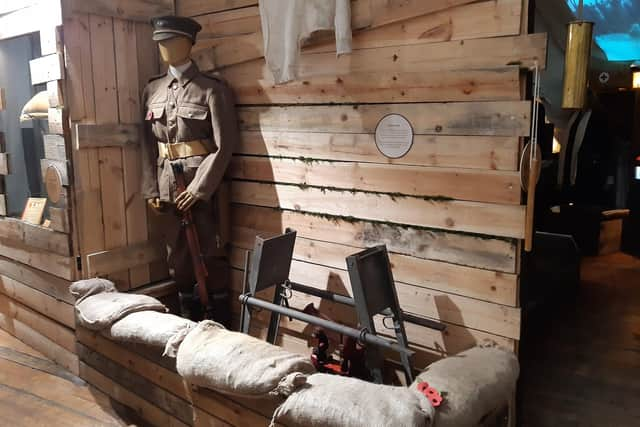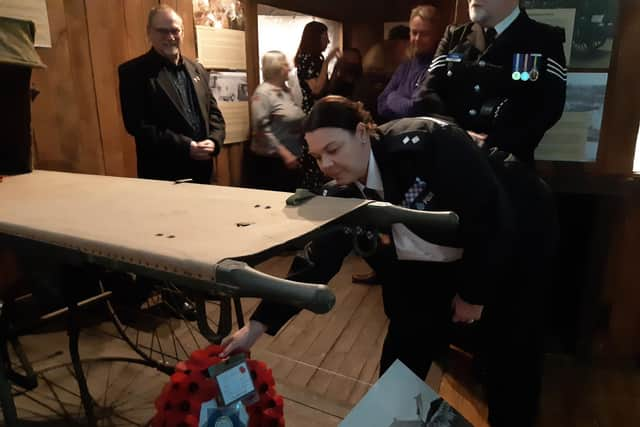Extraordinary new attraction at Sheffield museum allows you to experience wartime trench and smells of World War One
and live on Freeview channel 276
The exhibition, For King and Country, was launched at a special event on the evening of Armistice Day (November 11). It is now open to the public at the museum, which is housed in an old police and fire station in West Bar.
The ribbon was officially cut by South Yorkshire Chief Fire Officer Alex Johnson, who paid tribute to the way that the museum manages to pull together exciting exhibitions on limited resources.
Advertisement
Hide AdAdvertisement
Hide AdRepresentatives of other city emergency services and museum supporters were among the guests. Police Insp Danielle Spencer and Sgt Simon Kirkham laid a poppy wreath at the display.


The main space in the exhibition is an example of the ingenuity of staff and volunteers. Museum chief executive Matthew Wakefield said that the recreation of a trench dugout and first aid post was built with wood sent over by a museum in France that was dismantling its own trench display.
Unfortunately it arrived with no instructions so they had to figure it out for themselves!
You can even sniff recreations of some of the wartime smells at an activity station.
Advertisement
Hide AdAdvertisement
Hide Ad

For King and Country explores the role that police, fire, ambulance and lifeboat personnel played during the conflict, both on the front line and at home, and reveals the lasting impact the war had on the development of the emergency services.
It also features stories of personal heroism from those that served on the front line, such as South Yorkshire police officer and Victoria Cross recipient George Wyatt, and decorated ambulance driver Muriel Annie Thompson.
Firefighter Tom Breaks, who fought with the Sherwood Foresters, won a citation for an act of courage when he used his skills to control a fire at a French factory that was used as a war material distribution centre.
After the war he went on to head Sheffield Fire Brigade, working at the fire HQ that now houses the museum.
Advertisement
Hide AdAdvertisement
Hide Ad

Some exhibits, such as a scrapbook created by World War One nurse Jessie Akehurst and a horse-drawn Lingfield veterinary ambulance, have gone on display at the museum for the first time.
Museum curator Holly Gosling said: “World War Two is often thought of as being the first conflict that mobilised the whole country but it was World War One that set the template and which led to some huge changes in society.
"The emergency services couldn’t escape from that wave of change, either during the war or after it.
“From the millions of men who left the police or fire service to ‘do their bit’ as ordinary soldiers, to the women who took the opportunities war presented to prove themselves in a man’s world, there are so many stories to be discovered when you delve into the history of the emergency services during World War One. We can’t wait to share them with our visitors.’
Advertisement
Hide AdAdvertisement
Hide AdThe exhibition is now open to the public. For more information, go to visitnesm.org.uk.
